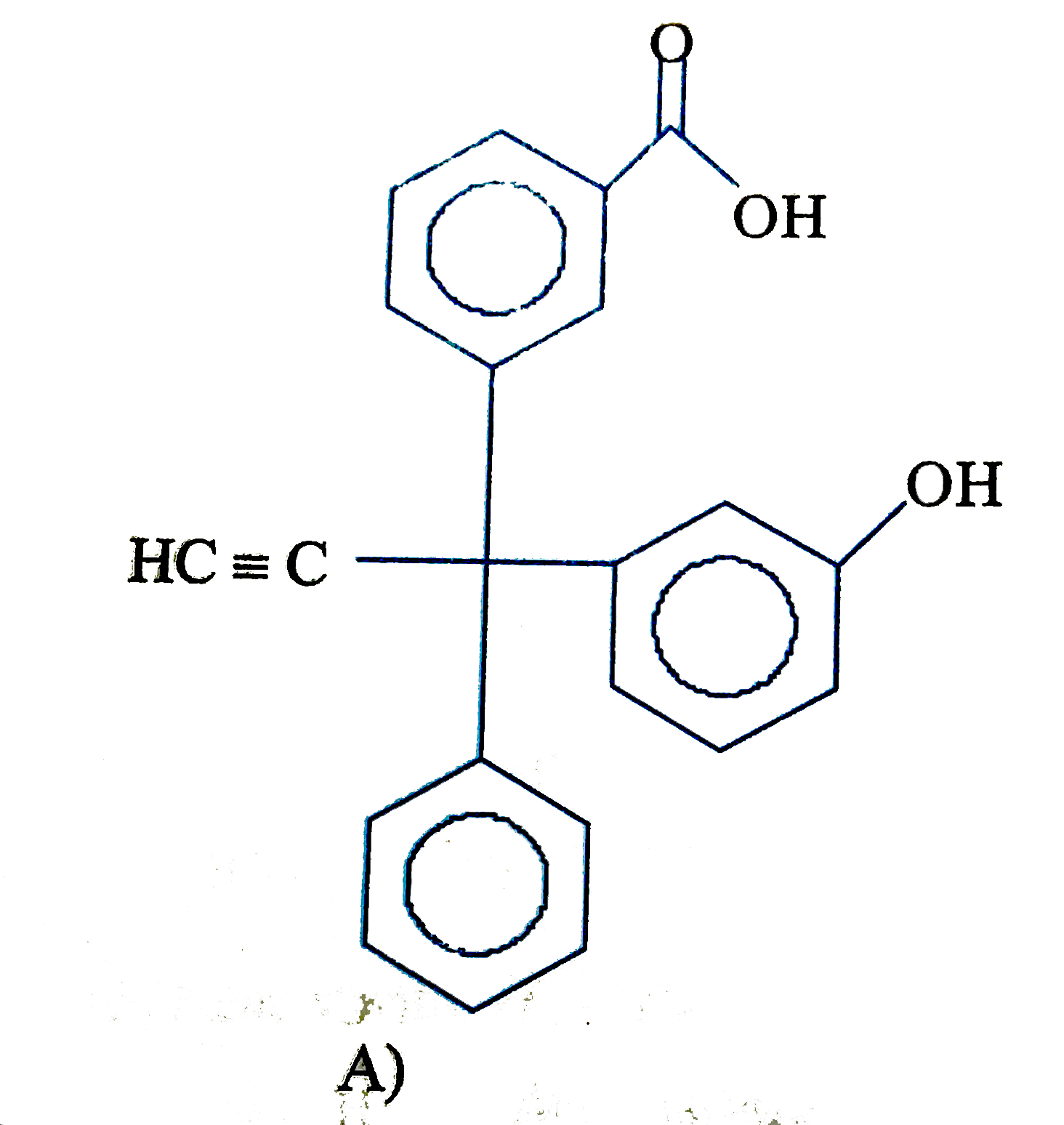How many litres of methane would be produced when 0.6 gm of Ch3MgBr is treated with excess of C4H9NH2?
0.8 litre
0.08 litre
0.112 litre
1.12 litre
The correct Answer is:C
To solve the problem of how many liters of methane (CH₄) would be produced when 0.6 grams of CH₃MgBr is treated with an excess of C₄H₉NH₂, we can follow these steps:
Step 1: Determine the molar mass of CH₃MgBr
- The molecular formula of CH₃MgBr consists of:
- Carbon (C): 1 atom × 12 g/mol = 12 g/mol
- Hydrogen (H): 3 atoms × 1 g/mol = 3 g/mol
- Magnesium (Mg): 1 atom × 24 g/mol = 24 g/mol
- Bromine (Br): 1 atom × 79 g/mol = 79 g/mol
Calculation:
Molar mass of CH3MgBr=12+3+24+79=118 g/mol
Step 2: Calculate the number of moles of CH₃MgBr
- Using the formula:
Number of moles=mass (g)molar mass (g/mol)
- For 0.6 grams of CH₃MgBr:
Number of moles of CH3MgBr=0.6 g118 g/mol≈0.00508 moles
Step 3: Determine the amount of methane produced
- The reaction of CH₃MgBr with C₄H₉NH₂ produces methane (CH₄) in a 1:1 molar ratio.
- Therefore, the number of moles of CH₄ produced is the same as the number of moles of CH₃MgBr:
Number of moles of CH4=0.00508 moles
Step 4: Calculate the volume of methane produced at STP
- At standard temperature and pressure (STP), 1 mole of gas occupies 22.4 liters.
- Thus, the volume of CH₄ produced is:
Volume of CH4=Number of moles×22.4 L/mol
Volume of CH4=0.00508 moles×22.4 L/mol≈0.113 L
Final Answer
Approximately 0.113 liters of methane (CH₄) would be produced.
---
- The molecular formula of CH₃MgBr consists of:
- Carbon (C): 1 atom × 12 g/mol = 12 g/mol
- Hydrogen (H): 3 atoms × 1 g/mol = 3 g/mol
- Magnesium (Mg): 1 atom × 24 g/mol = 24 g/mol
- Bromine (Br): 1 atom × 79 g/mol = 79 g/mol
Molar mass of CH3MgBr=12+3+24+79=118 g/mol
- Using the formula:
Number of moles=mass (g)molar mass (g/mol)
- For 0.6 grams of CH₃MgBr:
Number of moles of CH3MgBr=0.6 g118 g/mol≈0.00508 moles
- The reaction of CH₃MgBr with C₄H₉NH₂ produces methane (CH₄) in a 1:1 molar ratio.
- Therefore, the number of moles of CH₄ produced is the same as the number of moles of CH₃MgBr:
Number of moles of CH4=0.00508 moles
- At standard temperature and pressure (STP), 1 mole of gas occupies 22.4 liters.
- Thus, the volume of CH₄ produced is:
Volume of CH4=Number of moles×22.4 L/mol
Volume of CH4=0.00508 moles×22.4 L/mol≈0.113 L
Approximately 0.113 liters of methane (CH₄) would be produced.
Topper's Solved these Questions
- BOOK - GRB PUBLICATIONCHAPTER - CARBOXYLIC ACID AND DERIVATIVES, AMINES AND OTHER NITROGEN COMPOUNDSEXERCISE - REASONING TYPE9videos
CARBOXYLIC ACID AND DERIVATIVES, AMINES AND OTHER NITROGEN COMPOUNDS
- BOOK - GRB PUBLICATIONCHAPTER - CARBOXYLIC ACID AND DERIVATIVES, AMINES AND OTHER NITROGEN COMPOUNDSEXERCISE - MULTIPLE OBJECTIVE TYPE48videos
CARBOXYLIC ACID AND DERIVATIVES, AMINES AND OTHER NITROGEN COMPOUNDS
- BOOK - GRB PUBLICATIONCHAPTER - BIOMOLECULES, POLYMERS, PRACTICAL ORGANIC CHEMISTRY AND CHEMISTRY IN DAILY LIFEEXERCISE - SUBJECTIVE TYPE40videos
BIOMOLECULES, POLYMERS, PRACTICAL ORGANIC CHEMISTRY AND CHEMISTRY IN DAILY LIFE
- BOOK - GRB PUBLICATIONCHAPTER - CHEMICAL BONDING-IEXERCISE - Subjective Type120videos
CHEMICAL BONDING-I
Similar Questions
Knowledge Check
- Question 1 - Select One
How many moles of AgCl would be obtained, when Co(NH3)5Cl3 is treated with excess of AgNO3?
A1 molB2 molC3 molDNo ppt is formed - Question 2 - Select One
How many moles of AgCl would be obtained, when 100 ml of 0.1 M Co(NH3)5Cl3 is treated with excess of AgNO3 to give two moles of AgNo3 ?
A0.001B0.02C0.03DNone of these - Question 3 - Select One
How many moels of AgCI would be obtained, when 100 mL of 0.1 M CO(NH3)5CI3 is treated with excess of AgNO3?
A0.01B0.02C0.03DNone of thses
How many mloes of of AgCI would be obtained when 100mL of 0.1MCo(NH3)5CI3 is treated with excess of AgNO3 ?
(a) 0.01
(b) 0.02
(c ) 0.03
(d )None of these .View SolutionPropane is not formed when C3H7MgBr is treated with
View SolutionMethane is produced when CH3MgBr reacts with
View SolutionMethyl acetate on treating with excess of C2H5MgBr produces :
View SolutionWhich of the following compounds liberate methane when treated with excess of methyl magnesium iodide in dry ether -
(a) CH3–CH2–CH2OH(b)H3C–CH2–C≡CH
(c) H3C–CH2–CO2H (d) H3C–CH2–CHOView Solution


